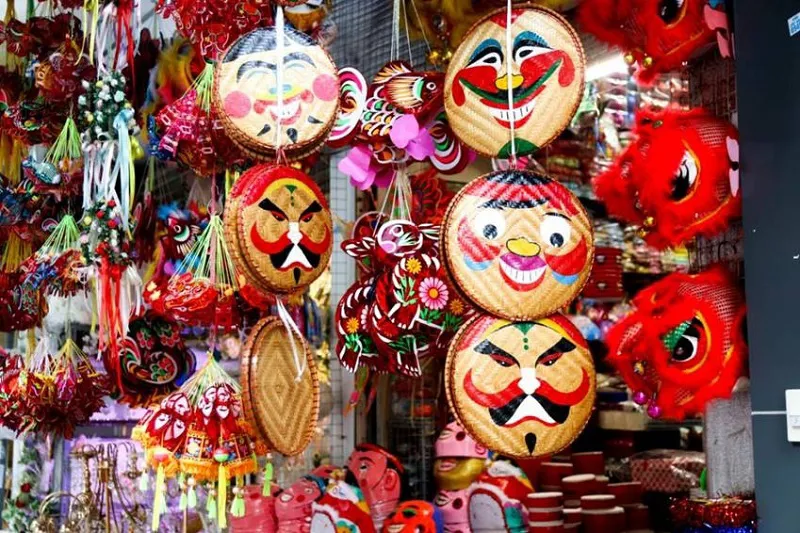Keeping the soul of Mid-Autumn Festival
At every Mid-Autumn Festival in recent years, it's easy to get the picture of a man passionately teaching children how to make traditional toys in cultural spaces. For artists, it is the best way to pass on the love of folk games to the younger generation.
Pursuing the traditional trade
Mr. Nguyen Van Quyen (Dan Vien Village, Cao Vien Commune, Thanh Oai District) is one of the few artisans in Hanoi who still holds the profession of making lanterns for the Mid-Autumn Festival. Every year when the festival comes around, he travels to many places to present and teach children how to make this traditional toy.
While cutting bamboo sticks and guiding girls and boys participating in the "Bright Full Moon" program at Thang Long Imperial Citadel to make the lantern, Mr. Quyen shared his story: ¨In the past, people made these lanterns to children not only as a toy, but also for educating patriotism and national pride.
For this reason, the stickers on the body of the lanterns are usually about traditional ceremonies, family culture and above all patriotism with images of soldiers, marches and battles. That is why it is called a military flashlight. Later, more diversified imaginations are added to the lanterns, such as popular paintings by Dong Ho and Hang Trong or typical figures of the Mid-Autumn Festival such as Uncle Teu, Uncle Cuoi and Sister Moon.
Artist Nguyen Van Quyen instructs the children to make traditional star lamps/ Photo: Lai Tan |
For the craftsmen, pursuing the profession of making traditional toys is more about a pleasure to not let it fall into oblivion than earning income. Artist Dang Van Hau is frequently found sitting in a corner of Hanoi´s Old Quarters with his hands squeezing powder to create various animals and objects. There are three main types of this kind of toy, according to him.
The first one are domestic animals such as buffaloes, horses, goats, dogs, chickens, and pigs (collectively referred to as ranches) and some fruits. The second are mythological animals such as dragon or unicorn. The third are free style, depending on the creativity of the artists. Among them, the first two were almost lost in the early 1990s of the last century.
A new life
In Hanoi and the northern countryside, there are still meticulous workers who keep the secrets of traditional toy making for the Mid-Autumn Festival. Therefore, every year on the occasion, traditional toys keep appearing and have a special value compared to modern ones. To further spread that value, in 2020, many artisan villages and cultural centers have organized programs for children to experience the making and enjoyment of traditional toys.
Hang Ma street during Mid-Autumn Festival/ Photo: Quynh Trang |
For example, a group of young people organized the event "Back to the village: Parading the lantern and welcome the doctor of paper". Departing from the Hanoi Cultural Friendship Palace, this group visited artist Nguyen Thi Tuyen (Van Canh Commune, Hoai Duc District, Hanoi), who has kept the job of making lanterns of five stars and doctors of paper - two typical toys for the festival for over 40 years. At her house, there was a plenty of bamboo, frames and colored paper sheets.
“The passionate pursuit of making folk toys is also to show my love for my children and grandchildren in the hope that they can study well for a good result and bright future. This year, the Vietnam Museum of Ethnology, the Temple of Literature and schools... also invited me to guide children to make toys. It´s busy but fun,¨ she said.
Thanks to the passion of artisans, the streets of Hanoi are no longer flooded with imported modern toys, but traditional toys have regained ground, attracting more and more customers. This also motivates the artisans to continue their work of preserving ancient values.












